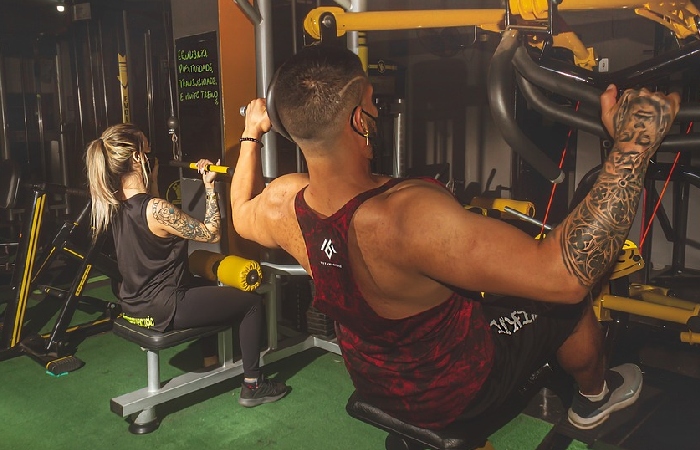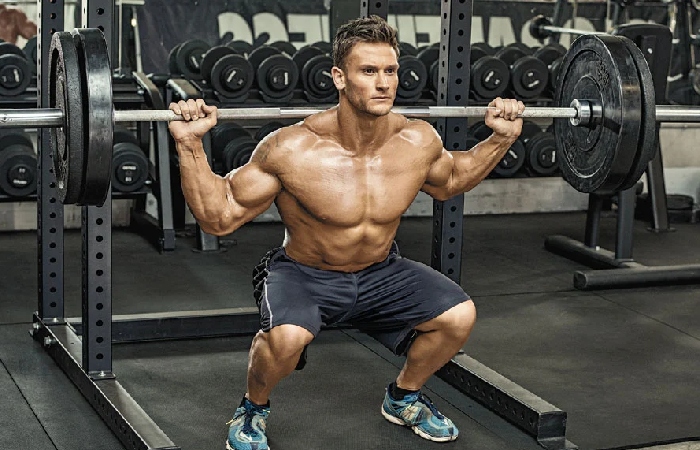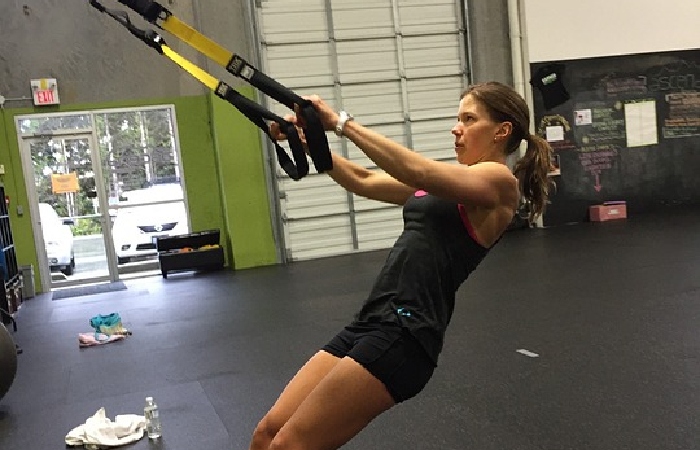Table of Contents
What are Compound Back Exercises?
Compound back exercises are movements that engage numerous muscles or muscle groups. This exercise is the opposite of an isolation exercise, which targets a specific muscle or area. Each has benefits, but compound exercises are the epitome of working smarter, not harder. Compound exercises work several powers at the same time. For example, joint compound back exercises are squats, pull-ups, and contrary lunges. Squats work your glutes, calves, and quadriceps, though reverse lunges target your abs, constraints, and biceps.
You can trust two exercises if you want to mark more muscles. For example, reverse swing with bicep curls or crouches. Compound exercises help you get earlier and more effective results than isolation exercises. Compound and separation exercises are dissimilar, as isolation exercises work a single group of muscles.
Why Squats are the Best Way to Build Muscle?
Squats are an excellent exercise for building muscle, powerlifting world champion Blaine Sumner told Insider. The powerlifting world champion describes. His squat is a compound exercise that works for multiple muscle groups. Sumner says she trains six days a week, with up to seven minutes of rest between sets. According to world powerlifting champion Blaine Sumner, squats are an excellent exercise for building muscle. Sumner, who stands 192 cm tall and weighs 181 kg, holds numerous world records and can lift 515 kg. Sumner told Insider that squats are “absolutely” the best exercise for building muscle. This is because you use different muscles in your body.
The Squat is the “King of Exercises.”

Squats are compound exercises that work for multiple muscle groups. “It’s called the King of Exercise,” Sumner said. Five-time ‘Fittest Man on Earth’ Matt Fraser believes squats are the best way to tone the body, and Britain’s ‘Fittest Man’ trainer Zach George also lists squats as one of his top five exercises for structure muscle. “If you’re a powerlifter, you should do backbone squats,” Sumner said. “But if you’re just trying to build muscle or want to get stronger as an athlete, front squats and different types of crouches are just as good.” For example, a back squat is a squat with a barbell on your shoulders.
The back squat is one of three exercises performed in a powerlifting competition, along with the bench press and deadlift. There are other compound exercises Sumner recommends for building muscle. For example, squats can be performed with dumbbells or kettlebells held in front of the chest (goblet squats), dumbbells on the back, weights with arms extended overhead, or body squats without having anything. You can also use just the weight.
How to Do Compound Back Exercises?
Compound exercises are the complete set of exercises to stimulate muscle form. These exercises engage your whole body, including your glutes, forearms, back, and core. They may comprise heavy equipment.
You can do compound exercises for the back by standing up in one position with proper balance. Squats, deadlifts, pull-ups, and push-ups are approximately common types of compound movements that keep you in shape.
What Muscles Do Compound Back Exercises Work?
Compound workouts for the backboard of almost every body muscle to improve its overall strength. Some of the primary compound exercises muscles functioned include:
Lats. A large, flat back muscle stretches in a V-shape to your arms to connect them to the vertebral pillar. These muscles steady your spine and provision your back and shoulder joints during the test.
- Glutes: The glute is the primary extensor muscle of your hips. This muscle is also known as the gluteus maximus, the outermost muscle. It is a solid, fleshy mass that covers your entire hips and makes them look quadrilateral. The gluteus maximus is the largest among the three gluteal muscles.
- The quadriceps are a large muscle group consisting of the four muscles that make up your thigh’s front part. Quadriceps are also known as quadriceps femoris, quads, or quadriceps extensors. They are the extensor muscles of your knee, forming a large, fleshy mass covering the femur’s front and sides.
- Abs: Also known as abdominal muscles and the rectus abdominis muscle, abs are two straight muscles parallel to each other. The lineal alba (a midline connective tissue band) separates both muscles.
- Hamstrings: Your thigh area consists of three posterior muscles, the hamstrings. Unfortunately, these muscles often have several injuries, especially for fitness enthusiasts or athletes. So, it would help if you were gentle on your hamstrings when doing compound exercises for your back.
- Shoulders: Your shoulder muscles consist of the deltoid muscle, further divided into anterior and posterior deltoids. The deltoid muscle makes up the rounded contour of your shoulders. The anterior deltoid has clavicular muscle fibers, while the posterior deltoid consists of spinal fibres.
- Core: Your torso is primarily known as the core. It consists of major muscles, including the belly, mid and lowers back, hips, shoulders, and neck.
- Forearms: The upper limb area between the wrist and the elbow.
The 5 Tips Compound Back Exercises for a Stronger

If you have a back that is large and strong, it will donate to your overall forte. The back strengths are the ones that help you twist your trunk, pull your arms in and down, and keep your spine stable. So when you train your back with stretches and exercises regularly, you can expect to become better at isolation exercises and pull and twisting motions.
Also, bigger and stronger back strengths will help you deadlift and seat press heavier weights. Here are 13 of the best compound movements to help you shape strength.
1. Pull-Up
One of the best back movements is the pull-up. You only essential a pull-up bar to do this workout, which you can easily buy for your home-based gym or find at a resident park. Stabilizing your body weight will also recruit the muscles in your essential. Your muscles will respond to a load from your body, especially if you are heavy. Grip the bar over your head, just broader than your shoulders. Relax your arms and shoulders and agreement your core and higher back as you start the pull-up. Try equally pulling your chin overhead the bar while pushing your shoulder joint away from your ears.
2. Dead Lift
Deadlifts activate your spinal and hamstring tendon, glutes, and muscles in your hips. You can do deadlifts with many heavy weights if you are trying to produce significant strength gains. They can be done with tall loads or training capacities to help build overall muscle and strength gains. When doing deadlifts, the back muscles do not donate directly to your range of motion but keep your spine safe. Stand in front of a loaded barbell with your bases shoulder-width apart, hips back, and back flat. Bend your knees to grip the bar tightly, slightly wider than your shoulder blades. Keep your back balanced and chest up, and tighten your back strengths. Straighten your weapons as you load the pull. Push your legs hooked on the floor and pull your torso and shoulders upwards as you lift the bar to your hips.
3. Bent-Over Row
Suppose you consume kettlebells, barbells, or dumbbells, you container row with any of those for general muscle building. You can smooth do the bent-over row on a chain machine. The chief idea is to overload your muscles more professionally by touching a lot of heaviness in the bent-over noise location.
Set up by way of you aimed at a barbell deadlift but home your torso nearly parallel to the ground. Grab the barbell with an oversewn grip that is more comprehensive than you use for deadlifts. Lean back and put your weight on your heels, then row the barbell with your right hand by leading the pull with your elbow, pending it touches your stomach.
4. Single-Arm Row
The single-arm barbell row is a unilateral noise difference (similar to a seated chain row) that can increase upper back strength and hypertrophy and correct any muscular asymmetries. It can also help you improve your arm and grip strength. You can address muscular imbalances by working one side of the body simultaneously. In addition to directing your back muscles, you’ll also seriously increase your grip strength as you squeeze a heavy dumbbell as hard as possible.
Stand next to a seat so that it’s similar to you. Place the same-side pointer and knee on it, and firmly plant your other foot on the floor. Spread down your free information and grab a dumbbell. Keep your back level and your head in a neutral location. Row the dumbbell to your lateral until your elbow passes your torso. At the same time, all your representatives are on one side and then switch.
5. The Farmer Transmit
The farmer’s carry benefits your upper and lower body strengths. It helps build grip strength, core forte and stability and improves postural forte and change. The Agriculturalist’s Carry can be done anywhere you can access weight and free space. It tests grip forte, core strength and postural control.
Find some open space and grip a pair of dumbbells or kettlebells in your hands. Take slow, skillful steps in a straight line. When portable with the troops in your hand, the challenge is maintaining a steady, standing position and not renting the weight to move from side to side. Maintain a walking path that is conventional and narrow.
Why You Should Care About Strong Back Strengths?
Unlike your abs, say, which are obverse and center when you gaze in the mirror, your back is behind you. And people tend to neglect the strengths they can’t see in the mirror, speaks Merit Summers, CPT, certified personal trainer and creator of Brooklyn-based training studio Form Fitness. But that’s a big mistake.
“We must not forget around the back muscles,” Midsummers says. “They are so significant for general posture.” A weak back can reason bad posture and slump, which may be principal to a close-fitting anterior cable (the muscles in the obverse of your body). This muscular imbalance can result in various problems, like breathing issues, lack of mobility, and back pain.
That’s critical since approximately 80 percent of adults will fight with low back discomfort during their lifetime, according to the Nationwide Organization of Neurological Disorders and Hit. Fortunately, strength exercise which builds muscle and jawbone mass can help decrease your risk of back problems and other injuries.
Compound Back Versus Isolation Movements

Compound movements work multiple strengths compared to isolation exercises, which only board one control (think: biceps curls). So not alone do they save you a lot of time in the gym. Still, compound exercises also burn more calories since they include additional muscles, according to the American Assembly on Exercise (ACE).
And that’s not all. Multi-joint movements also convalesce your coordination, cardiovascular fitness, and flexibility, per ACE. Plus, as opposed to separation exercises, compound movements are functional. That means they make your body for the bodily stresses of daily life. For example, a squat media can train your muscles for winding and lifting a child.
When it comes to the spinal, which is included numerous muscles, it’s almost unbearable to work one muscle in isolation, Summers says. “Greatest back exercises are multiple movements, which is great because it increases muscle engagement.” So, you can do actions that target the lats, upper and lower back, but your hips, legs, shoulder joint, and arms will get worked, too.
The Most Effective Compound Back Exercises
- If there is one power group that doesn’t get the care it deserves, it is the back.
- You need a nice robust back for just around everything in life.
- Whether you want to develop that excellent ‘V’ shape in your upper body or like your back to have some definition for your wedding dress, you’ve come to the right place.
- This post will teach you the best multiple back exercises you can do.
- Let’s get started.
- A big, strong back can take you far in your athletic endeavors.
The back muscles help you to twist your torso, pull your arms in and down from overhead, and, most importantly, stabilize your spine. You’ll be more efficient at pulling and twisting motions when you train these essential muscles. Also, a bigger and stronger back will help you deadlift and bench press more weight more efficiently.
Conclusion
Whether you’re working in a modern office, on your feet all day, or keen to improve your physical health giving your back the exercise time and attention it needs is essential. This can reduce your risk of injury, minimize lower back pain, and allow you to achieve superbly. So, here are 11 back compound exercises that will help you build a more robust and extensive back; we’ve separated them into lower back exercises, upper back exercises, and let exercises (though some activities fit into multiple categories).
Helpful Resources:
Related posts
Featured Posts
Best Gynecologist in Kolkata
What do you mean by a Gynecologist? The studies and treatments of the medical conditions and diseases of women are…
Face Swimsuit – A Breakdown of Swimsuit Styles
Introduction Face Swimsuit – Make your very own face swimsuit in two fabrics and eight sizes. Face-on swimsuit print is…


